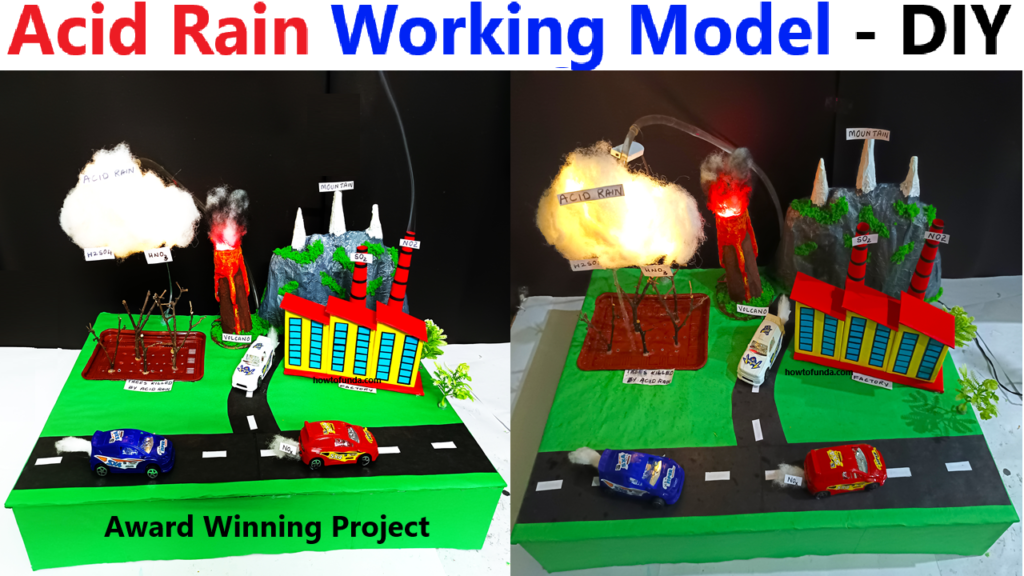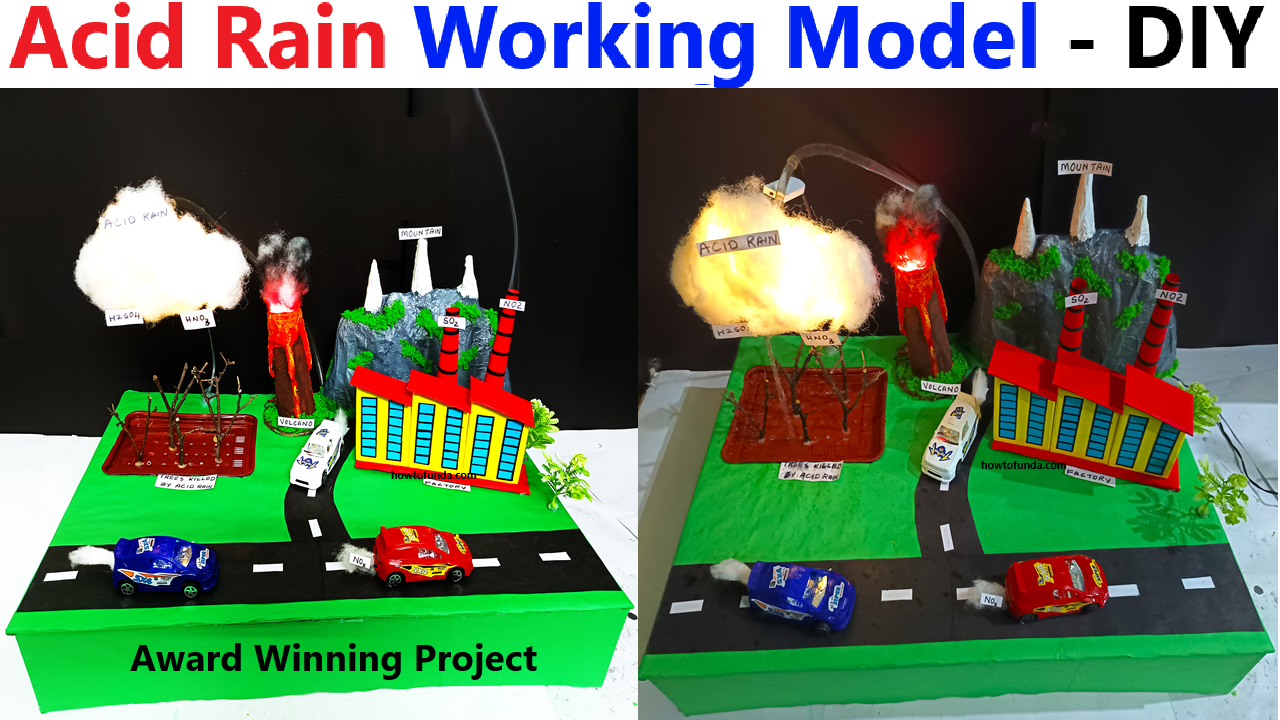Creating an acid rain working model with features like factories, smoke, a volcano, and simulated acid rain is an excellent science project for an exhibition.

Here’s how you can construct it step by step:
Materials Required
- Cardboard: For creating factory buildings and a base for the model.
- LED Lights: To simulate the glowing effect of the volcano.
- DC Water Pump: To create a water flow for simulating rain.
- Plastic Water Trays: For collecting water (clean and acid rain simulation).
- Cloud Material: Cotton or synthetic fiber to represent clouds.
- Pipes or Straws: To carry water from the pump to the “clouds.”
- Dry Trees and Plants: Made from twigs or paper to show the effect of acid rain.
- Paints and Markers: For decoration and detailing.
- Glue and Tape: For assembling parts.
- Battery or Power Source: To power the LED and water pump.
- Dry Ice or Incense Sticks: To simulate smoke from factories.
Step-by-Step Guide to make Acid Rain Working Model
1. Build the Base
- Use a large piece of cardboard as the base for your model.
- Divide the base into sections:
- One for factories emitting smoke.
- Another for the volcano.
- A third section for the acid rain simulation.
2. Construct the Factories
- Cardboard Factory Models:
- Cut and assemble small cardboard boxes into the shapes of factory buildings.
- Paint them gray or black to represent industrial facilities.
- Smoke Simulation:
- Place small holes at the top of the factory chimneys.
- Use dry ice or incense sticks to produce realistic smoke effects.
3. Build the Volcano
- Structure:
- Create a cone-shaped volcano using cardboard or papier-mâché.
- Paint it brown and black to give a realistic look.
- LED Lighting:
- Place red and orange LED lights at the volcano’s crater.
- Connect the LEDs to a battery to simulate glowing lava.
4. Simulate the Clouds and Rain
- Clouds:
- Attach cotton or synthetic fiber to a lightweight frame above the factories.
- Hide the water delivery pipes inside the “clouds.”
- DC Water Pump Setup:
- Connect the pump to a water tray filled with water mixed with a little vinegar (to simulate acidic rain).
- Attach pipes or straws to the pump and run them through the clouds.
- When the pump is powered, water will drip down as rain onto the trees and land below.
5. Display the Effects of Acid Rain
- Dry Trees and Damaged Land:
- Place twigs painted brown to represent dead or damaged trees.
- Paint the ground in the acid rain section to show soil degradation (grayish or black patches).
- Water Trays:
- Use two trays:
- One for clean rain (water without acid).
- The other for acid rain (water mixed with vinegar).
- Compare the effects of clean and acidic water on plants or other objects.
- Use two trays:
6. Add Details and Labels
- Label all the parts (factories, volcano, acid rain, clean rain, etc.).
- Add an explanation of the process:
- Factories and volcanoes release gases (like sulfur dioxide and nitrogen oxides).
- These gases mix with water vapor in the clouds, forming acid rain.
- Acid rain damages plants, soil, and water bodies.
How the Model Works During the Exhibition
- Start the Simulation:
- Turn on the LED lights to make the volcano “erupt.”
- Light incense or use dry ice for smoke from factory chimneys.
- Power the DC water pump to create rain from the clouds.
- Observe:
- Show the acid rain falling on the dry trees and land, contrasting with clean rain in another area.
- Explain:
- Describe the science behind acid rain, its formation, and its environmental effects.

